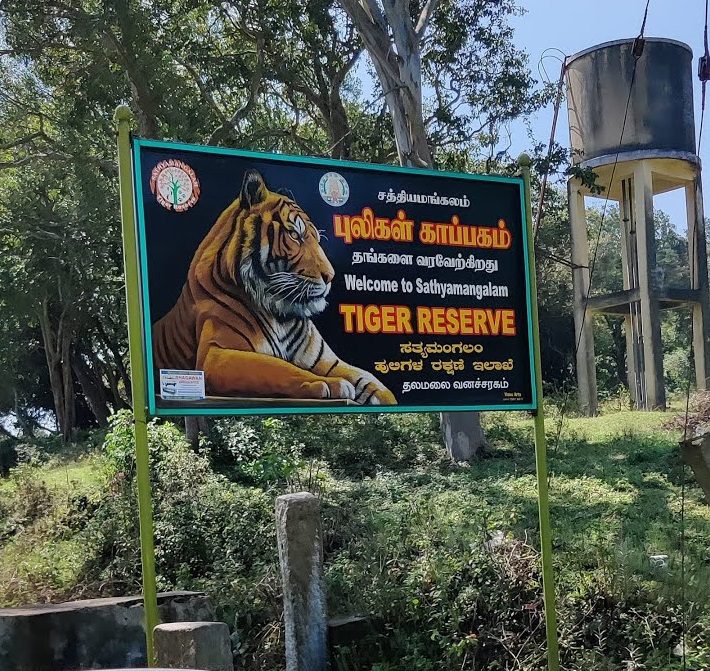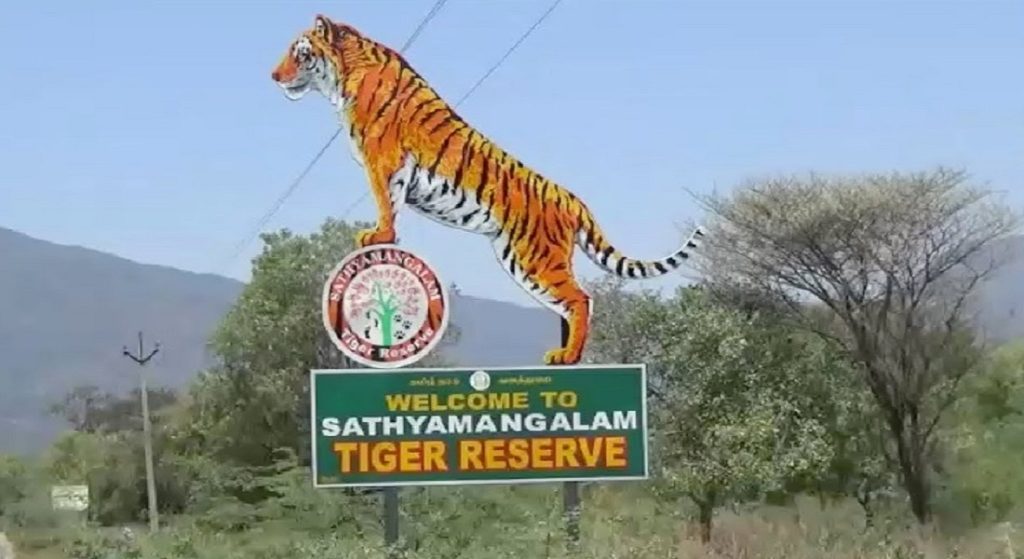Good news came out this week from Tamil Nadu as Sathyamangalam Tiger Reserve (STR) in its Erode district got the prestigious TX2 award for doubling its tiger population. The Reserve is at present home to more than 100 tigers in its 1411 sq. km campus. In 2010, only 25 tigers lived there.
The award is given to reserves that has achieved a remarkable and measurable increase in its tiger population since 2010. Set in 2010 by the 13 tiger range countries, the goal known as TX2 is credited with reversing the downward decline of tigers from a low of 3,200, thanks to outstanding examples of protected area management.
That Sathyamangalam Tiger Reserve was chosen for the award suggests that India’s famous ‘Project Tiger’is on the right track. Indian Masterminds interacted with 2001-batch IFS officer,Mr. Nihar Ranjan, Chief Conservator of Forests and Director, Sathyamangalam Tiger Reserve,to know how the Reserve managed to double the tiger number.

TX2 AWARD
In 2020, Uttar Pradesh’s Pilibhit Tiger Reserve was awarded the first TX2 Award for having doubled its tiger population before the stipulated time frame. In 2014, it housed 25 tigers. This figure went up to 65 in 2018.
The TX2 Awards celebrate the remarkable contributions made by government bodies, NGOs, and local communities to strengthen tiger conservation. To honour a recently notified Tiger Reserve like Sathyamangalam with the award is a step forward to inspire others to work towards preserving this magnificent species and its habitats.
HOW SATHYAMANGALAM DID IT
Sathyamangalam Tiger Reserve is spread over 1411 sq. km and is a human dominated landscape. There are more than 40 to 50 villages here. There are at least more than 10 roads, including one national highway and two state highways. Hence, the anthropogenic pressure is very high.
“That’s why public participation matters a lot here. The people in and around the area played a big role in this award. Tamil Nadu government supported us a lot. Then there was the support of the National Tiger Conservation Authority (NTCA), which funds Project Tiger every year. NGOs like WWF, WTI, WII and Traffic India all had a role in this.”

The officer said that it was their prime responsibility to protect nature in the Tiger Reserve and that’s what they did. If you give protection to nature, it will flourish on its own. If eco-system is to be developed, then protection is required. “We focused on intensified patrolling and strictly enforced the protocols to monitor them. Then there are so many roads and so many vehicles pass this are day and night. So, we focused on night patrolling, awareness board, speed limit and speed breakers. We made a guideline that only tribals should be engaged as anti-poacher watchers. The benefit of this is that we got more support in the villages inside the park and we generated employment as well.”
He further informed that two years ago, there were about 87 tigers. And the recent camera trap exercise which is done under the protocol of NTCA suggests that the number is increasing. He desisted from mentioning the exact number citing protocol.

WAY AHEAD
Mentioning the future plans for the Reserve, the officer said that efforts are on for enforcing a night traffic ban on the highways that cross through the tiger reserve to protect wildlife.“We have given a proposal to the state government. This ban will be for commercial vehicles and long distance vehicles only. Local villagers and emergency vehicles will be exempted from it. We are also planning to relocate some villages which are in the elephant corridor.And another focus is to remove the invasive species,especially lantana. About 30 percent of the reserve is covered by it. By removing it phase wise,we will restore the grassland.”
INCREASING TIGER POPULATION
The Sathyamangalam Tiger Reserve is now home to more than 100 tigers in its 1411 sq. km campus. Its area is contiguous with the Mudumalai Tiger Reserve, Bandipur Tiger Reserve (Karnataka) and BR Tiger Reserve and Wildlife Sanctuary (Karnataka). Together, these reserves — forming the Nilgiris biosphere landscape — have the biggest tiger population in the world, at over 280 tigers.

































